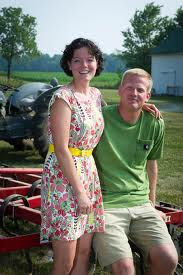
Yeah, yeah, yeah. Mashed potatoes again. They're easy, almost everybody likes them, they don't take much thought. There's just not much to get excited about though, is there?
Then again . . .
Atlanta chef/author Virginia Willis has this crazy ability to think like a chef about simple things. Her newest book, "Basic to Brilliant, Y'all" (Ten Speed Press, $35) is really sort of brilliant in itself: She has all these great recipes, most Southern in inspiration. For each one, she gives the recipe, then she gives you something else with it - a way to dress it up, or use it another way, or add something to it. For instance, she has a recipe for Seafood Jambalaya, and with it she gives you an idea for grinding your basic bag of fried pork skins into a powder in a food processor and sprinkling it over things like jambalaya. Yes, she thinks like that.
Her mustard-flavored mashed potatoes really grabbed my lapels and shouted "cook me!" And when I did, it shouted with flavor. Seriously, mustard whisked into mashed potatoes: Sounds strange. Tastes delicious. I haven't made the second recipe, but it might be just the thing for ramping up your Thanksgiving potatoes.
Virginia Willis, I bow to your cooking talent. Well-played, missy.
Yukon Gold Mash With Coarse-Grain Mustard From "Basic to Brilliant, Y'all," by Virginia Willis.
2 pounds (4 to 6) Yukon Gold potatoes, peeled and cut in large chunks
Coarse salt
1 1/3 cups low-fat or whole milk (I used skim, which worked fine)
1/4 cup (1/2 stick) unsalted butter
1/4 cup coarse-grain Dijon mustard
Freshly ground white pepper (I used black pepper, and it didn't blow up)
Place potatoes in a large, heavy saucepan and cover with cold water. Season with salt, bring to a boil over high heat, then decrease heat to low. Gently simmer until the potatoes are fork-tender, about 25 minutes.
Combine milk, butter and mustard in a small saucepan over low heat while the potatoes are cooking. Cook until the butter is melted; cover and keep warm.
Drain the potatoes in a colander and return to the saucepan over medium heat. Cook, stirring constantly, until a floury film forms on the bottom of the pan, 1 to 2 minutes. (You're just drying the potatoes so they mash well without being watery.) Remove from heat. Pass the potatoes through a ricer or food mill, or mash with a potato masher. Add the warm milk mixture, stirring vigorously until well-combined. (I added it by additions, so it didn't get too loose.) Taste and adjust for seasoning with salt and white pepper. Serve immediately.
Pommes Mont d'Or Yes, it means "Golden Potato Mountain." Preheat oven to 350 degrees. Grease a gratin dish with 1 tablespoon unsalted butter. Let the potato mixture cool slightly in the saucepan, then add 3 lightly beaten eggs and 1 tablespoon chopped fresh thyme. Stir to combine. Pour into the prepared gratin dish and spread gently with a spatula. Sprinkle 1/4 cup (1 ounce) grated Gruyere on top and bake until a rich, golden brown, about 30 minutes. Remove to a rack to cool slightly, then serve. Serves 4 to 6.









